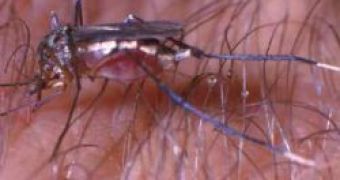Australian researchers have announced a discovery which is likely to dramatically reduce the enormous number of victims annually claimed by malaria.
The world's deadliest malaria parasite, Plasmodium falciparum, sneaks past the human immune system with the help of a wardrobe of invisibility cloaks. If a person's immune cells learn to recognize one of the parasite's many camouflage proteins, the surviving invaders can swap disguises and slip away again to cause more damage.
Howard Hughes Medical Institute (HHMI) international research scholars in Australia have determined how P. falciparum can turn on one cloaking gene and keep dozens of others silent until each is needed in turn.
Their discovery, published in the Nature journal, describes the genetic mechanism which ensures its survival.
The secret of this parasite, which is spread by the female anopheles Mosquito, consists in a DNA sequence near the start of a cloaking gene. This sequence is known as the gene's promoter and its role is to trigger the production of one protein and to keep the other genes silent.
"The promoter is all you need for activation and silencing. It's the main site of action where everything is happening," Alan Cowman, one of the authors, said.
"It's like a leopard being able to change its spots. New forms come up, and the immune system beats them down again. Because of this a lot of people think you need five years of constant exposure to malaria in its different disguises to gain immunity," Cowman added.

 14 DAY TRIAL //
14 DAY TRIAL //